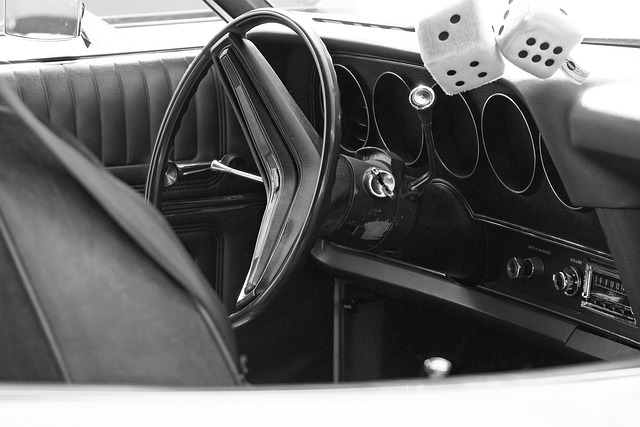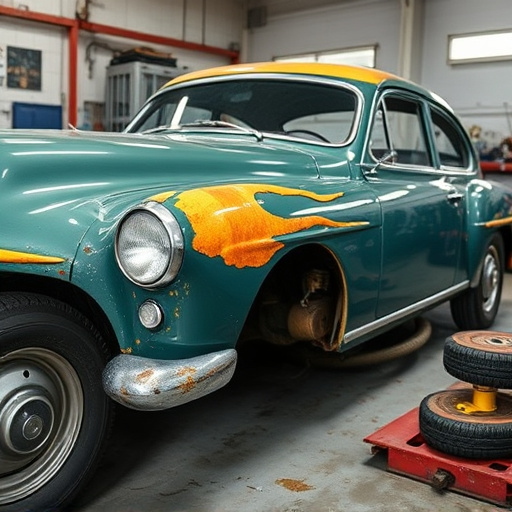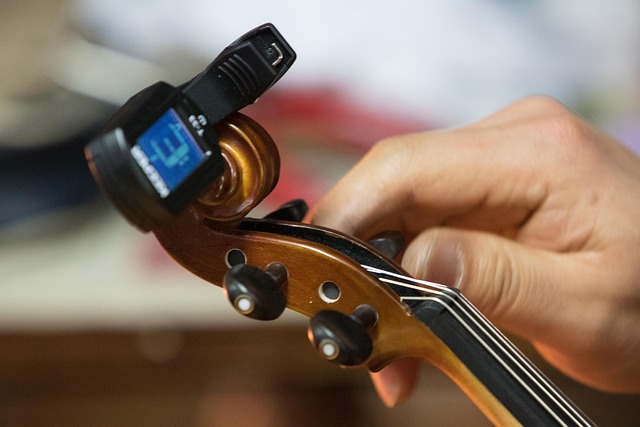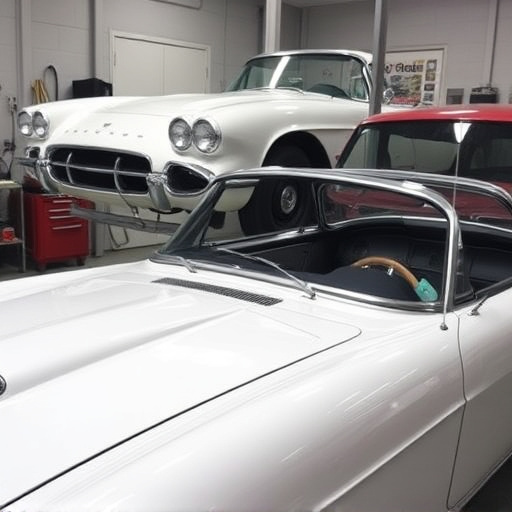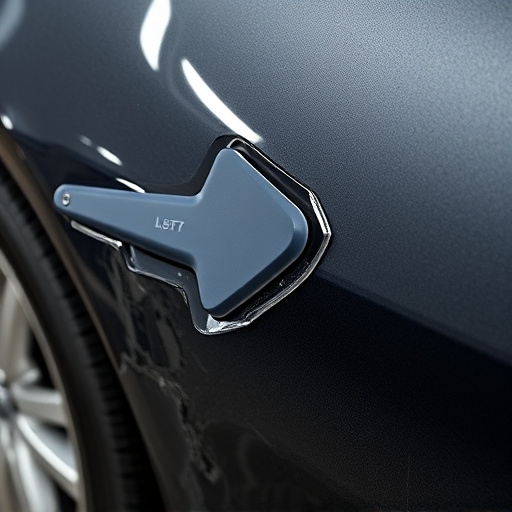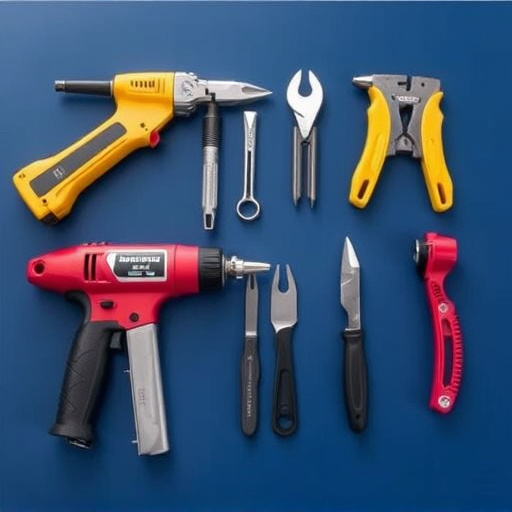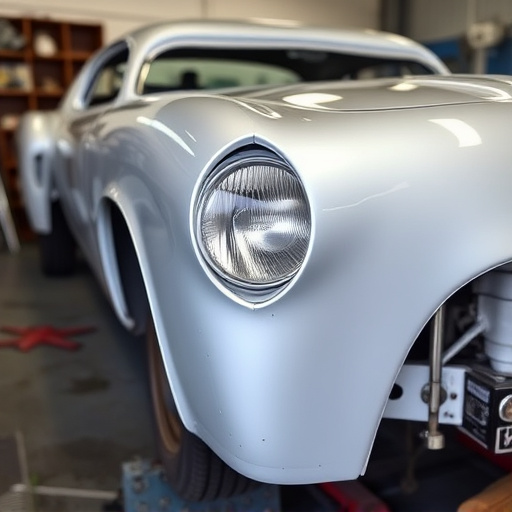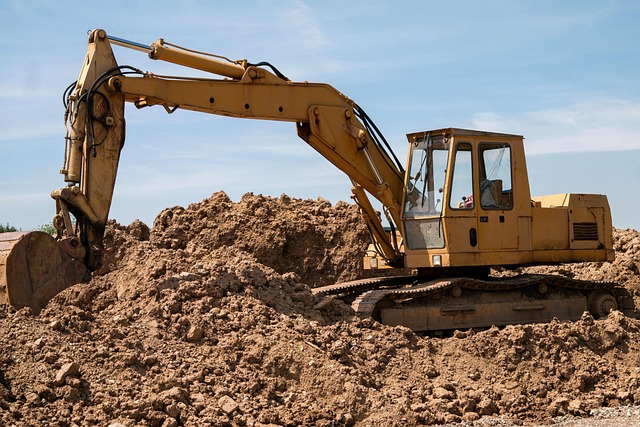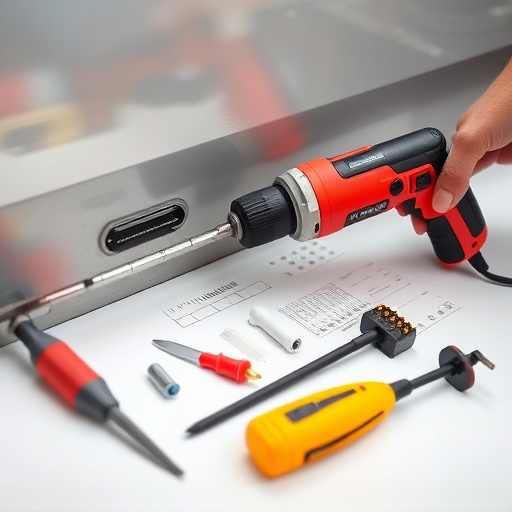Before restoring a vehicle, thoroughly assess its condition, plan repairs from simple to complex, and research best practices. Initial phases involve safety gear, demolition, panel disassembly, and structural inspection. Reconstruction includes dent removal, priming, painting, and trim addition for both aesthetics and structural reinforcement. Final steps include tire services for optimal handling and a smooth drive.
Auto body restoration is an art that transforms damaged vehicles into like-new masterpieces. For ambitious DIY enthusiasts or seasoned professionals, understanding the key steps is essential. This comprehensive guide delves into the core processes of full auto body restoration projects. From initial assessment and meticulous planning to safe demolition and intricate reconstruction, each phase demands precision and expertise. Discover how to navigate this challenging yet rewarding journey, ultimately achieving a stunning vehicle transformation through effective auto body restoration techniques.
- Assess and Plan: Understanding the Scope and Requirements
- Demolition and Preparation: Safety First, Removing Damage
- Reconstruction and Finishing: Crafting a New Look and Structure
Assess and Plan: Understanding the Scope and Requirements

Before diving into an auto body restoration project, it’s crucial to assess and plan thoroughly. This initial phase involves understanding the scope and requirements of the task at hand. Start by evaluating the condition of the vehicle, identifying any damage or structural issues. Create a detailed list of tasks, considering both minor repairs like bumper repair and more complex transformations.
Researching and planning are key. Understand the auto body restoration process, from surface preparation to painting. Consult with experienced professionals or reliable auto repair shops to gain insights into best practices and potential challenges. This step ensures you’re well-prepared for the journey ahead, whether it’s a simple overhaul or a complete vehicle restoration.
Demolition and Preparation: Safety First, Removing Damage

Demolition and preparation are crucial stages in any auto body restoration project. Before beginning any work, ensuring safety is paramount. This involves donning appropriate personal protective equipment (PPE), including gloves, goggles, and a respirator to mitigate the risk of injury from debris or toxic substances. Proper ventilation is also critical, especially when dealing with old paints and solvents.
The next step is removing all damage from the vehicle. This meticulous process includes disassembling affected panels, carefully cutting away rusted or damaged areas, and thoroughly inspecting the underlying structure for any hidden issues. Skilled technicians use specialized tools to ensure clean cuts and precise measurements, paving the way for accurate auto body repairs and a flawless finish in the subsequent stages of the restoration.
Reconstruction and Finishing: Crafting a New Look and Structure
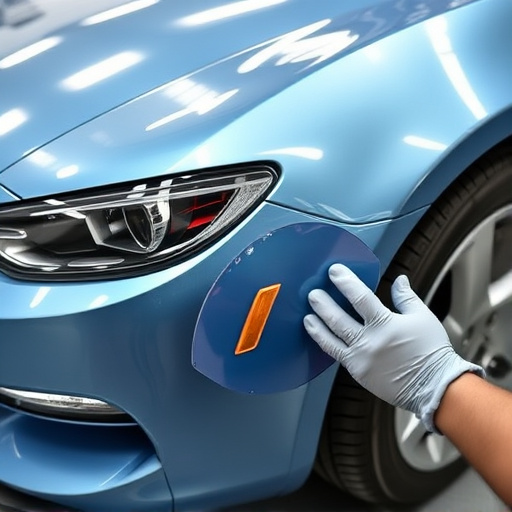
In the reconstruction and finishing phase of auto body restoration projects, the old or damaged car is transformed into a sleek, new vehicle. This stage involves meticulous work to create a structure that is not only visually appealing but also structurally sound. Skilled technicians use specialized tools and techniques for car dent removal, ensuring every imperfection is eliminated to achieve a flawless surface. Once the body has been brought back to its original shape, a range of finishing processes can be employed, from priming and painting to adding intricate details and trim pieces.
The art of crafting a new look extends beyond aesthetics. It includes reinforcing damaged areas with advanced materials, ensuring the car’s structural integrity. This step is crucial for safety and long-term performance, especially after extensive auto body repair. The finished product is a vehicle that not only drives like new but also boasts a stunning exterior, often enhanced by tire services to complete the overall appeal and handling capabilities.
Auto body restoration is an intricate process that demands meticulous planning and execution. From assessing the damage to crafting a new look, each step requires skill and precision. By prioritizing safety, understanding the scope of work, and focusing on detailed finishing, restorers can transform damaged vehicles into like-new conditions, ensuring customer satisfaction in every aspect of the auto body restoration project.
